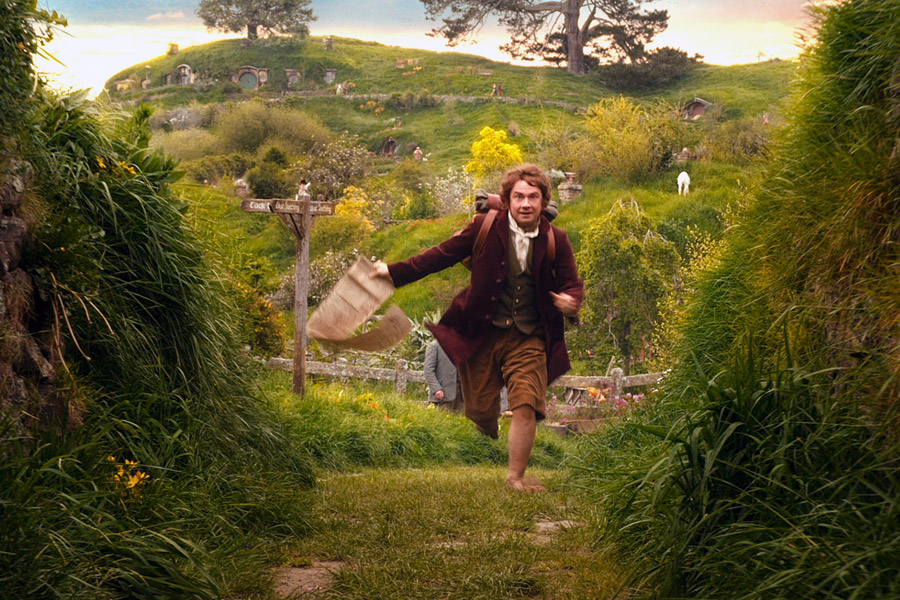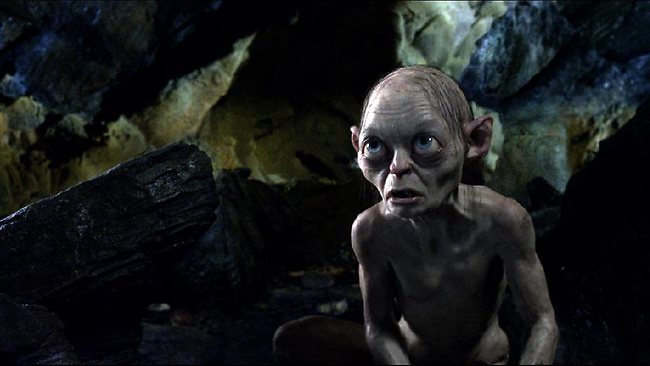Reviewed in both 2D and 3D HFR
Tonight I saw The Hobbit: An Unexpected Journey (AUJ) for the second time and at last, I can finally review it properly. You see, to me at least, to review a film in the right fashion you kind of need to see it in the original format the director intended.
While that isn’t always possible due to a number of reasons such as the age of the film (see: original Star Wars) or the rarity of the format it was shot in (see: Paul Thomas Anderson’s, 70mm version of The Master), for AUJ I had to make an exception and seek out both available formats.
Just before the New Year, I saw AUJ in ‘normal’ 2D at my local cinema, The Everyman. I was unsure at first; if you know anything about Tolkien’s The Hobbit, you’ll know that it is not only a children’s story that takes place before the events in The Lord of the Rings, but also a short story at that.
How they were going to stretch it out over THREE films was hard to imagine so, with the sound of money pouring into Warner Bros’ pockets echoing in my ears, I entered the cinema with much trepidation.
And I must say overall, it wasn’t that bad a film. The first half an hour or so is super self-indulgent (and entirely unnecessary), but once the journey in question gets underway, the pace picks up and you’re reminded of what it is to visit Middle Earth once again. Like Fellowship of the Ring before it, this first part of a trilogy combines a lot of character introductions with a lot of running and not really much plot development at all. One hopes that, again like The Lord of the Rings, things will get really interesting come part two.
One hopes.
That said, Martin Freeman is excellent as Bilbo and I would gladly sit through The Hobbit over and over again solely to watch the fantastic game of riddles set-piece with the scene-stealing keeper of the precious, Gollum (Andy Serkis, again proving he’s the best there is at mo-cap).
Speaking of seeing The Hobbit again, tonight I did just that. Thanks to some hardcore client work we delivered in the run up to Christmas, my team and I were treated to a private screening at Warner Bros – in full 3D and HFR.
‘What’s ‘HFR’?!’ I hear you cry. Well, sit down and I’ll tell you.
HFR stands for High Frame Rate, which is the very latest innovation in modern cinema. Basically it means doubling the frame rate from 24 to 48 frames per second which in turn results in a cleaner, more real (aka SUPER High Def) moving image.
To say that the introduction of HFR has been divisive would be an understatement.
But I don’t care about what others have said (and this is why I felt I had to see it in both formats before I could pass judgement), the addition of HFR really is quite fantastic. In short: I absolutely loved it. Although it can be quite jarring at first, you really can see this being the future of where cinema goes next.
Yes, it’s jarring at first – ‘it looks like a made-for-TV film!’, said some – but once you’re over the initial shock, it just works. In this instance. For this film. 99% of the time at least, it works.
What I mean is, for a film such as The Hobbit (where director, Peter Jackson, has meticulously created as much of the real world of Middle Earth against the backdrop of New Zealand and all/most outdoor scenes are just plain gorgeous to look at) shooting in HFR really brings home the sumptuousness of the scenery, of the characters placed in that scenery, and then the story that they tell together.
The 1% when it doesn’t work? When a format is built to show every minute detail, CGI sticks out like a sore thumb. This much I can forgive as, as with any new technology, there are teething problems and, given how far CGI has come over the past ten years, it won’t be an issue that much longer.
What that means is where effort is made to create the universe in question, HFR cinema can win – brilliantly.
I’d like to see a Ridley Scott film in HFR, I thought to myself mid-way through. His eye for detail and commitment to real-world creation would be perfect for this new format.
But I digress.
I’ve seen The Hobbit: An Unexpected Journey twice and I enjoyed so much more seeing it in 3D HFR. Therefore I recommend that you seek it out, enjoy the latest evolution in cinematic entertainment, and settle in for another chapter of Tolkien’s Middle Earth masterpiece.
Cheers.
Ps. I have some other films to write up soon, so watch this space.


Interesting review. We intended to see it on Wednesday, but didn’t partially because I’m not a huge fan of 3D and muddled up the timings so only the 3D HFR version was showing. You’ve now almost convinced me I made a mistake and should have still watched it.
James Reply:
January 11th, 2013 at 12:04
I don’t think it’s for everyone, but I certainly really enjoyed it. I’m 100% certain there’ll be more HFR in the future. Divisive, yes. But they said that when they introduced talkies! 😉
anon Reply:
January 11th, 2013 at 16:40
I am not generally a fan of 3D, either, but The Hobbit is best seen in HFR 3D. You must sit in the center of the theatre and not too far back to get the best effect. (I saw it several times in the new format, and once in 2D for comparison, and that is my assessment.)